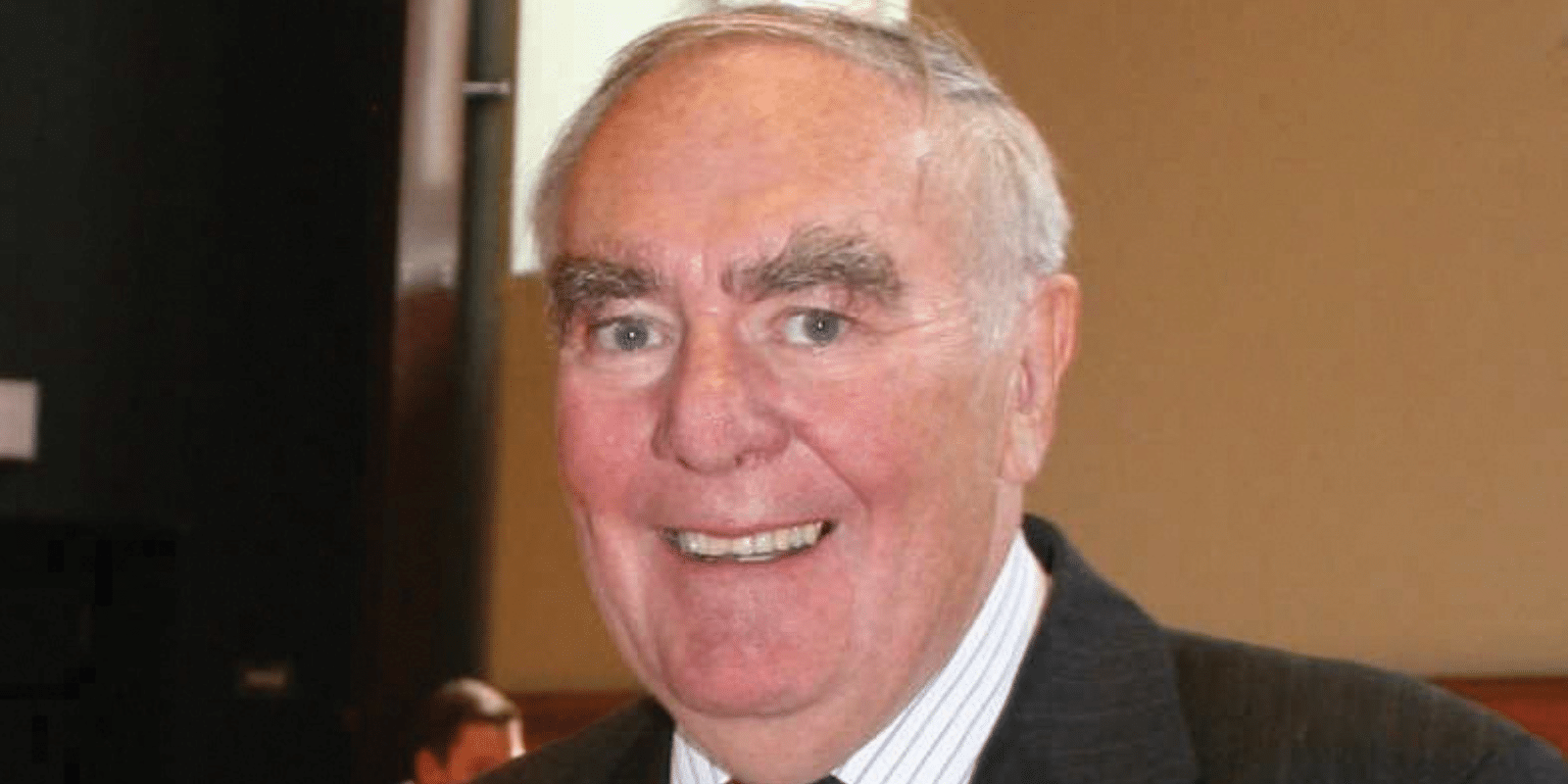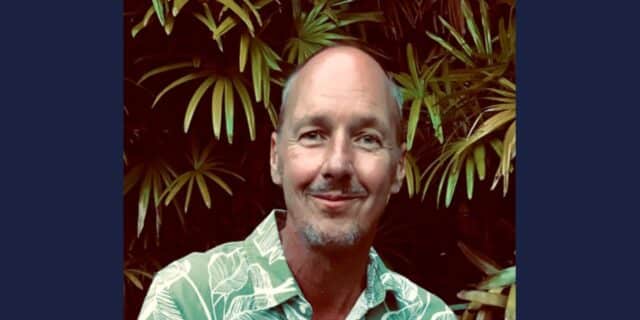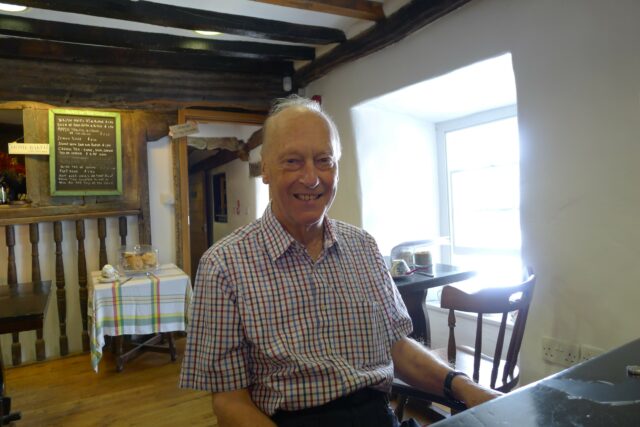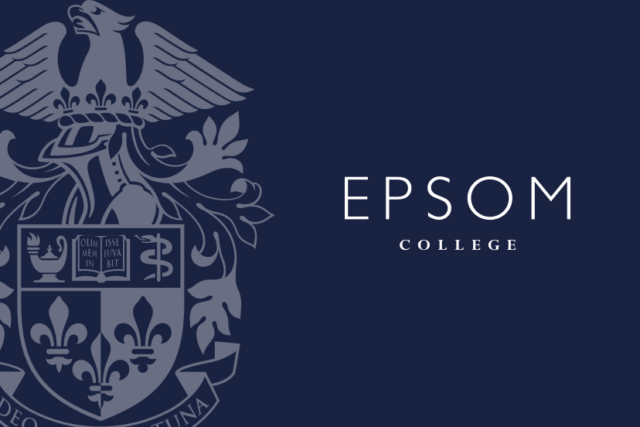By Roger Gill, former Housemaster of Holman and former Deputy Head (Staff)
John Barry Cook died on 1 March 2023, aged 82. Born in Gloucester in May 1940, at school he excelled academically and at rugby, cricket and athletics. He read Physics and Mathematics at King’s College, London (the first in his family to go to university), later transferring to Guy’s Hospital for a PhD in Biophysics. His investigations into the effects of radiation on cancer cells were at the leading edge of scientific research, and John now took his first steps in communicating his passion for science, lecturing at the Royal Veterinary College and at Guy’s Medical School.
By this time he had already met his future wife, Vivien, and they were married in the Chapel of the Royal Naval College at Greenwich. His first teaching post was as Physics Master at Haileybury, where the Headmaster was so impressed that he appointed him Senior Science Master after only one year. John subsequently developed the concept of Combined Science, later to
be recognised by the exam boards.
At Haileybury, Vivien and John had their three children, David, Susan and Richard. When he was only 32, John became Head of Christ College, Brecon, in January 1973. He fully embraced Welsh culture, not least that part focusing on rugby – his first purchase at the school was a scrum machine! John came to be regarded as an “honorary Welshman”.
Apart from his appetite for hard work, he possessed that winning combination of clear vision and an exceptional grasp of detail. Appointed to Epsom in 1982, he implemented his priorities with vigour. Examination results were a major priority – his scrutiny of statistics and results by individual paper, by subject and by board was well ahead of its time, as was his emphasis on the managerial role of the Head of Department.
Premises were important too and he launched major refurbishments of the Physics and Biology laboratories, completely reconfiguring them in their substantial Edwardian buildings. Seven other departments also saw significant improvements. Thanks to these initiatives, and realistic funding of departmental facilities, the transition to GCSE in 1988 went very smoothly. Indeed, when League Tables were introduced, Epsom finished far ahead of a considerable number of renowned establishments that had simply been caught napping.
Clear-sighted and determined in his objectives, John was keen to carry the Common Room with him where possible. He was especially aware of the importance of staff recruitment and retention. Denise and I well remember him greeting us at Epsom Downs station for my interview, clad in a duffle-coat and driving Vivien’s Mini Metro, his lack of pretension exercising its immediate
charm on us. His interest in his staff and their families was palpably sincere and long-lasting and that is the reason why many of us remained at the College.
Improving results and close links with preparatory schools (John was a governor of many) saw a growth in pupil numbers that was sustained throughout his tenure. Largely through the consequent fee income, and without recourse to an appeal, came several building projects, including staff housing.
But perhaps the most striking of these new buildings was the Ronald Raven Sports Centre, opened by HM the Queen in 1989. It underlined John’s conviction of the value of sport as part of the all-rounder curriculum; every pupil should be encouraged to participate in a variety of sports, whatever their level of ability.
Also, and despite his frequent admission that he had no ear for music, he allowed the size of the Chapel choir to double and his support for all concerts, plays and other extra-curricular events was even-handed and entirely dependable.
Pastorally, John’s boldest step was to introduce weekly boarding – he mooted it late in 1982; by Michaelmas 1983, we already had 80 weekly boarders! That meant the major Chapel service was moved to Saturday and, to cope with increasing pupil numbers, he initiated
the system of two chaplains.
But having been a Headmaster from 1972-1992, John began to seek a change, and in a move which surprised, and saddened, many of us, he announced his retirement from August 1992. In
his farewell speech for John and Vivien, Second Master Michael Squibbs said that “Epsom College now catches the eye; we have a very healthy reputation – and what is more we have a worldwide reputation for having a very good Headmaster.”
John and Vivien moved to Bagshot in Surrey though, typically, ‘retirement’ became anything but. You see the strands of education and welfare running through his subsequent undertakings. His first post was as Director of the Inner Cities Young People’s Project, fostering relations between pupils of widely different backgrounds. He regularly helped at the St Botolph’s project for the homeless in East London. He chaired the 700th Anniversary Appeal of the Worshipful Company of Barbers to help disadvantaged pupils gain places at medical school.
John was also Chairman of Trustees for CHASE (now Shooting Star Children’s Hospices), playing an instrumental role in setting up the first children’s hospice in Surrey. He was an influential Trustee of AEGIS, monitoring standards of guardianship for overseas pupils. In 1995, he became Principal of Cumberland Lodge, often introducing delegates to the Queen and the Queen Mother after Sunday chapel services. He even found time to set up, with Vivien, an educational consultancy.
However, relaxation could begin to feature more, and long-haul trips included the Antipodes, China and Sri Lanka. Always a family man, John took great pride in following the progress of his seven grandchildren, supporting them at matches and other events.
Much of what John achieved was underpinned by his Christian faith and values, and a later source of satisfaction was his involvement with his local church, St. Anne’s, Bagshot. Revd. Andreas Sistig, who led the funeral service, recalls his exceptional support, especially as an adviser who would not shy away from discussing problem areas, but in a way that engendered trust and encouragement. Many at the College would recognise that.
A striking phrase from the family eulogy reads: “He had no pretensions and treated everyone equally, whether he was meeting people in the Royal Box at Wimbledon or chatting with a homeless person at St Botolph’s.” Small wonder that the spacious nave at St Anne’s was packed with those wishing to pay their last respects.
Apart from John’s colossal abilities, we shall keenly miss his benevolence, sage advice, good humour and approachability. In offering our deepest condolences to Vivien and all the family, we are left profoundly saddened that we could not enjoy the company of this great man a while longer.





